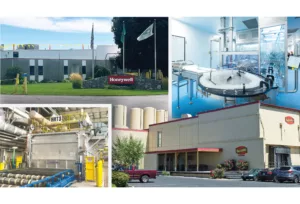
Home » New treatment freezes, kills prostate—and cancer
New treatment freezes, kills prostate—and cancer
Cryoablation procedure said to be less invasive, less painful than surgery
February 26, 1997
A less invasive method of treating prostate cancer now is being used in Spokane.
The procedure, called cryoablation of the prostate, involves freezing the entire prostate and killing italong with the cancer with which its infected.
Dr. Steven Silverstein, a Spokane urologist who started performing the procedure last month, says studies suggest that cryoablation is just as effective as radical prostatectomy, which is the surgical removal of the entire prostate, and is much more effective than radiation treatments. Yet, he says that the new procedure, which received U.S. Food and Drug Administration approval last year, has a faster patient recovery time and is less likely to cause damage to the rectum and urethraand resulting incontinencethan the other two treatment options.
This is probably as exciting a new procedure as weve seen in some time, he says.
The cryoablation procedure causes erectile dysfunction in all cases, Silverstein says, which makes it an unappealing option for younger men who havent encountered that problem previously. For some older men, including those who arent candidates for surgery or who already suffer erectile dysfunction, cryoablation would be the preferred treatment, he says.
The patients have had almost no pain with this, Silverstein says. After a few days, they can do anything they wish, except have sex.
The procedure involves inserting a series of 12 small probesrods that look like tiny barbecue skewers, Silverstein saysthrough the perineum, which on a man is the skin between the scrotum and the anus. Some of the rods administer argon gas that freezes the prostate, and others monitor temperature to make sure the prostate is getting cold enough and the rectum and urethra arent too cold.
Ultrasound technology is used both before and during the procedure to measure the size and shape of the prostate and helps to determine precisely what area should be frozen and how much argon gas is needed.
With the ablation procedure, the prostate is frozen and thawed a few times in repetition to ensure that the tissue is killed. It takes between 90 minutes and two hours to complete, Silverstein says.
Typically, Silverstein says, a patient can return to his normal daily activities a week after the procedure. He says hes performed the procedure on 11 patients so far, and the only reported pain has been minor bruising of the perineum where the probes were inserted.
In contrast, it takes six to 12 weeks for a patient to recover from a radical prostatectomy.
Laser procedure
Silverstein also says he is one of a couple of Spokane physicians who began last year using a new laser technology to treat whats called benign prostate hyperplasia, or prostate obstruction.
Benign prostate hyperplasia occurs frequently in older men, Silverstein says, and is caused by an enlarging of the prostate that inhibits flow of urine through the urethra and eventually causes bladder damage.
With the laser treatment, called Green Light KTP, a laser is used to vaporize excess prostate tissue, and thereby relieve pressure on the urethra and bladder. The procedure takes between 20 minutes and 30 minutes to complete.
Silverstein says the laser procedure is considered an alternative to transurethral resection of the prostate, which involves inserting a device called a resectoscope via the urethra and cutting tissue from the prostate.
Studies suggest that the laser procedure typically results in better urination flow rates. Measurement of flow rates is a typical method of determining effectiveness in treating benign prostate hyperplasia.
Transurethral resection, long considered the gold standard for treatment of benign prostate hyperplasia, typically is followed by two to six weeks of recovery, with some bleeding during that time, Silverstein says. The laser treatment typically requires two to six days of recovery, and bleeding is unusual. While quicker recovery time is important, Silverstein says, The main attraction for the laser treatment is that it preserves sexual function.
With transurethral resection, the neurovascular structures critical to erections can be damaged, leaving a patient with erectile dysfunction.
With either procedure, a patient typically has a loss of ejaculation, Silverstein says. A patient still is able to experience an orgasm, he says, but doesnt produce any semen.
Latest News
Related Articles



_web.webp?t=1764835652)
